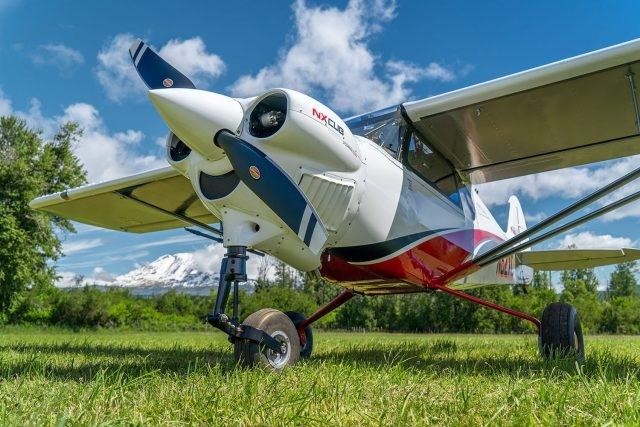
Lightweight, strong, and easy to handle, shape, and repair, composite materials have been instrumental in driving the development of next-generation aircraft and components.
Although Hartzell Propeller introduced our first composite propeller blades over 70 years ago, composite propellers are still relatively new to the general aviation industry. Many aircraft owners wonder about the difference between composite and metal propeller blades, and whether it’s worth making the switch. Today, we’re clearing up some of the most common questions about composite aircraft propellers.
A basic definition of “composite” is a structure that’s made up of multiple complementary substances. Individually, the substances aren’t as strong, but when combined properly they become a composite structure that’s exceptionally strong and durable. Common composite materials used in aviation include fiberglass, carbon fiber, and Kevlar®.
At Hartzell Propeller, the structural part of our composite propeller blades is constructed using a combination of aerospace-grade carbon fiber and Kevlar® materials for optimal strength and performance.
Making advanced composite propeller blades is a high-tech and exacting process. At Hartzell, we use both machine engineering and human expertise to produce thousands of high-quality composite propeller blades in a given year.
Unlike some other composite blades, our advanced structural composite propellers are full composite, not composite over a wood core. We start by pulling carbon fiber socks over a low-density foam core, then inject resin with a vacuum pump and cure the blade after it’s put into a mold and pressure is applied. After hours of curing, the blade is removed from the mold and refined to our precise standards. The leading edge is protected with a co-molded electroformed nickel-cobalt erosion shield for greater endurance and protection from foreign object damage.
Hartzell’s proprietary composite engineering and manufacturing technologies have reduced the formerly high cost of producing composite propeller blades, making carbon fiber propellers more affordable for today’s pilots.
Weight savings is always a priority in general aviation, and composite blades offer a substantial weight reduction over their aluminum counterparts. The nature of composite materials makes it possible to create thin, efficient airfoils that are still strong enough to withstand extreme forces in flight. Switching to a lightweight composite propeller can also help to reduce harmful wear on the engine and improve fuel efficiency.
Excessive noise can be a concern for pilots and passengers alike. There are multiple sources that can cause cockpit noise, including the engine, exhaust, and airflow around the fuselage, as well as the propeller. Switching to a composite propeller may limit potential prop noise. With Hartzell’s composite props, the foam core helps to absorb vibration, damper cockpit noise, and provide better cabin comfort.
Another benefit of lightweight composite blades is that more blades can be added without also adding excessive weight. Additional blades certainly enhance ramp appeal, but they may also offer better performance, improved efficiency, and reduced noise and vibration. Today’s composite blade technology makes it possible to have propellers with upwards of 6 blades!
Perhaps the top advantage of composite props is their longevity. Unlike with aluminum blades, damage to composite blades can be repaired over and over again without adversely affecting the airfoil shape. In fact, Hartzell’s composite blades are certified for unlimited life. Minor repairs between overhauls can even be made with little or no assistance from a prop shop. So, while composite blades may require higher initial investment, they offer exceptional value for aircraft owners in the long term, helping to save money and reduce flight downtime.
To learn more about Hartzell’s advanced structural composite propellers, click here or contact us to find the best propeller suited for your aircraft.